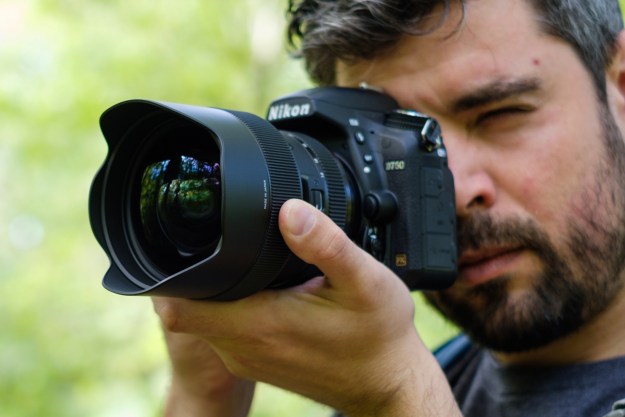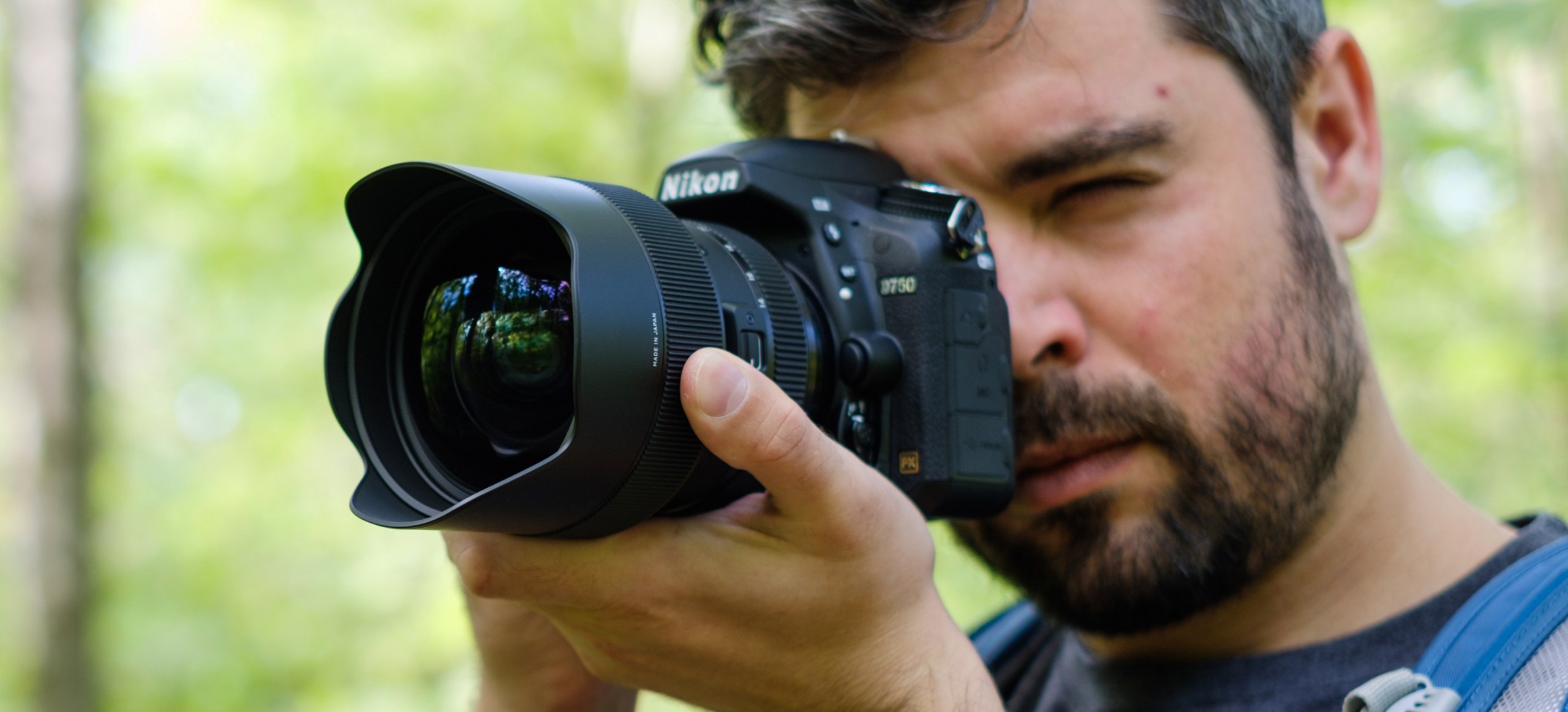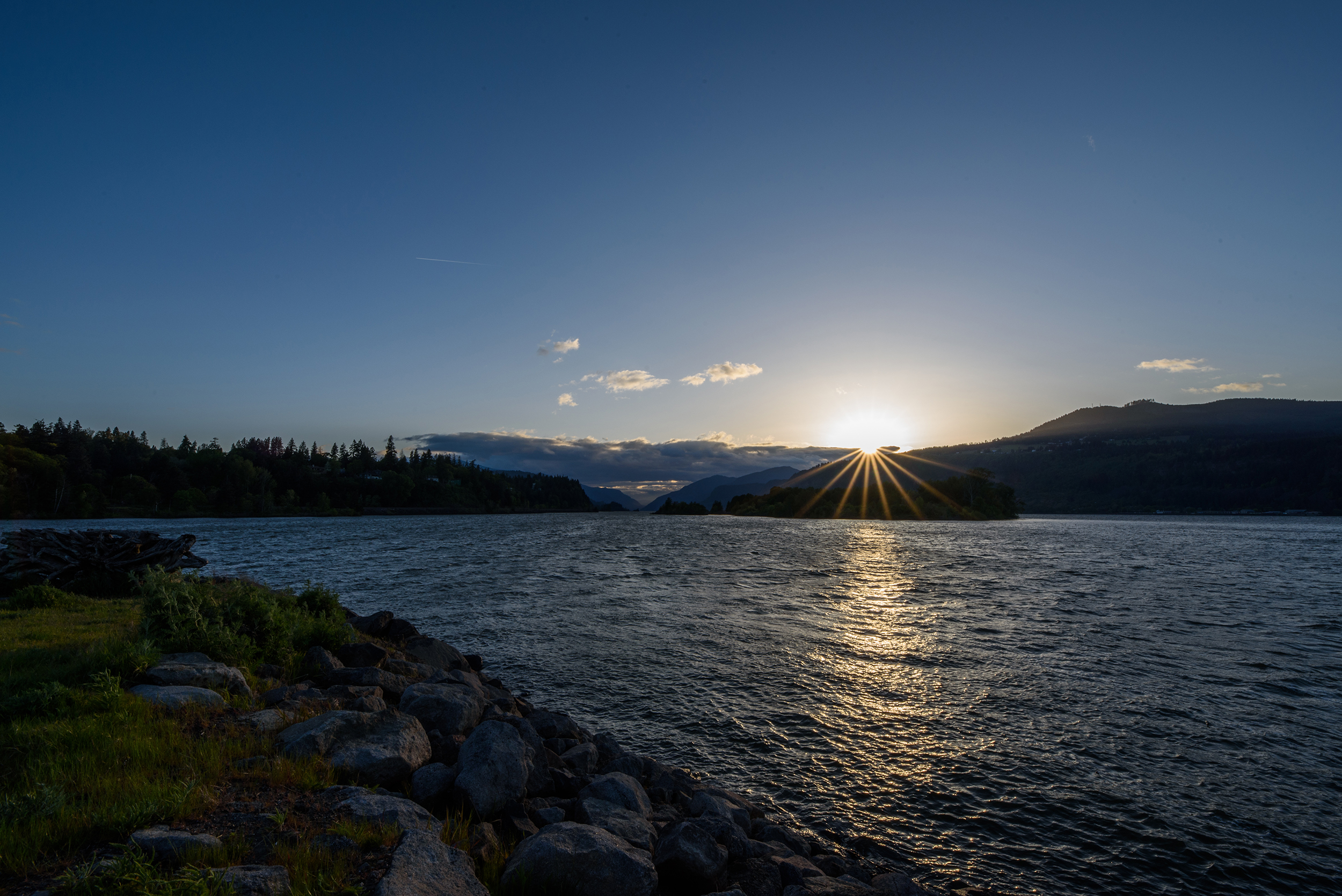
- Great build quality
- Dust and splash proof
- f/2.8 maximum aperture
- Very sharp
- Virtually no chromatic aberration
- Bulky, heavy
- Doesn’t support filters
- Short zoom range
We probably could have written this review on assumptions alone and made only minor changes after actually shooting the new Sigma 14-24mm F2.8 Art. Don’t worry, we didn’t do that — but the point is, we have yet to be let down by a Sigma Art lens. Each model we’ve tested has been so consistently good that we can basically say if it has “Art” on it and it’s a focal length you need, then buy it.
Sigma has always been about value, but the Art series has redefined what that means. It’s not about being cheap; it’s about being the best while doing it at a lower price than the competition. Sigma Art lenses stack up side-by-side with the equivalent first-party Canon and Nikon glass and often perform even better in objective measurements. Not only that, they give high-end specialty lenses like those from Zeiss a run for the money.
The 14-24mm F2.8 Art is one of the more interesting lenses to come out of Sigma recently. It goes up against the legendary Nikon 14-24mm f/2.8G ED, a “holy trinity” lens that has soldiered on for over a decade without an updated model or a direct competitor. But as we saw with the 135mm F1.8 Art, Sigma likes taking on focal lengths that have long been left untouched by first-party manufacturers.
And naturally, at $1,299, the Sigma is $600 cheaper than the Nikon.
Design and build quality
Like all Sigma lenses, the 14-24mm is available in three mounts: Nikon F, Canon EF, and Sigma’s own SA. With an adapter, the lens can also be used on Sony E-mount cameras with full compatibility. Canon users who have looked longingly at the Nikon 14-24mm may be the most excited, as they now finally have access to a very similar lens.
Sigma claims the optical design is intended to all but eliminate distortion, a common flaw in ultra-wide-angle lenses. It uses 17 elements in 11 groups, with three aspherical elements and three each of FLD and SLD low-dispersion elements. The aperture spans a wide range from f/2.8 to f/22 and uses a nine-bladed iris — the same specs as the Nikon version.
At 40 ounces, this is a beast of a lens, but it feels very solid and well made. It is weather-sealed and dust- and splash-proof, so adventurous landscape photographers can shoot freely in whatever elements they find themselves in. The focus and zoom rings are perfectly weighted to rotate smoothly and precisely. The built-in lens hood helps shade the front element — as much as possible on such a wide lens — to prevent flaring, and the hard-plastic lens cap that fits over it is reassuringly robust.
It’s not about being cheap; it’s about being the best while doing it at a lower price than the competition.
If the company skimped on anything to hit such a low price point, we certainly can’t tell what.
Image quality and user experience
If there’s one obvious negative about the 14-24mm Art, it’s simply how big and heavy it is. This is unavoidable on a full-frame, ultra-wide zoom with a fast maximum aperture, but the Sigma does carry an additional 5 ounces over the Nikon. While it’s not altogether difficult to shoot handheld, your back, neck, and arms will definitely thank you if you use a tripod.

At less than a 2x zoom, 14-24mm doesn’t sound like a lot of range to work with, but the difference between the wide and telephoto ends is actually quite noticeable. That said, this is somewhat of a more limited lens compared to many other ultra-wide-angles, like Sigma’s own 12-24mm F/4. Most shooters probably don’t need an f/2.8 aperture on a wide zoom, so it may make sense to go with a lens that gives you more range. Moreover, landscape photographers who want to use a filter on this lens are out of luck, unless they spring for an expensive adapter and large square filters. If you’re set on an ultra-wide zoom with a fast aperture, though, you’ll be happy with the potential this lens delivers.
Autofocus performance was fast and nearly silent thanks to the ultrasonic focusing motor. We did run into some occasional issues when trying to focus on small subjects close to the camera, like blades of grass. However, we’re fairly confident this was at least in part due to the AF limitations of the camera.
We’re pleased to see that after more than 10 years, the Nikon 14-24mm f/2.8 finally has some strong competition.
We tested the lens on a Nikon D750, an older DSLR that remains one of our favorites. The 51-point AF system on the D750 simply doesn’t match the performance of the newer 151-point system found on the D850 and a couple other Nikons. Beyond that, the D750 is built to be more compact than other full-frame DSLRs, but when paired with such a massive lens, we found ourselves wishing for a larger camera body. It’s a bit of a conundrum — minimizing weight is generally preferred, but the balance would have likely been better with the larger D850.
The 14-24mm Art is also built with modern high-resolution sensors in mind, and it had no trouble producing sharp images on the 24-megapixel D750. In fact, it probably out-resolved the sensor. Even wide open at f/2.8, sharpness in the center of the frame was immaculate and chromatic aberration was simply nonexistent. The edges were softer, but sharpened up considerably by f/5.6. Vignetting is also quite heavy at f/2.8, particularly at 14mm, but this is to be expected for such a lens. In a real-world setting, vignetting was essentially unnoticeable by f/4.
As impressed as we were, it would be even more so with a higher-resolution camera, like the 46MP D850.
As for distortion, there is some curvature near the edges but it is quite minimal and certainly within the range of what could be corrected digitally without sacrificing too many pixels. Just being able to render straight lines as straight lines is only one challenge, however; wide-angle lenses “stretch” anything that ventures too far from the center of the frame, so this certainly isn’t a portrait lens (not that anyone was expecting it to be). But even for landscapes, this can pose a problem as objects near the periphery of the frame won’t look completely natural. This is not an issue with this lens — it’s just something to be aware of with ultra-wide-angles in general (and sometimes, this effect can actually be desirable).
Sharpness in the center of the frame was immaculate and chromatic aberration was simply nonexistent.
The only real fault we found was when shooting almost directly toward the sun. Here, internal reflections suddenly became very apparent, causing a considerable amount of lens flare. This was most noticeable at 14mm. However, we should clarify that this only showed up in one particular setting — in the majority of cases, flaring was impressively well controlled. If the sun is going to be in your shot, just try to position it away from the center and you’ll get a clean exposure.
Subjectively speaking, we were very pleased with how this lens renders out of focus areas. You won’t often have a shallow depth of field on such a wide lens, but at f/2.8 and shooting close to your subject, it is possible to create a fair amount of background blur. Again, the wide-angle look means it’s unlikely — though certainly not impossible — that you’ll use this lens for portraiture, but there are other times when being able to separate your subject from the background can be beneficial, and few wide-angle zooms have that capability.
Warranty
Sigma offers a four-year warranty on all new lenses.
Our Take
The Sigma 14-24mm F2.8 Art brings a new type of lens to Canon and Sony shooters while giving Nikon users a strong reason to consider a third-party option over the venerable Nikkor 14-24mm. This is a very well-made product with excellent performance and superb value; in short, it is exactly what we have come to expect from the Sigma Art line.
That said, this particular lens is limited in its appeal. It is more difficult to work with than some other ultra-wide-angles due to its bulk, lack of filter support, and limited zoom range. It’s a specialized tool with limited applications, and it won’t be a lens that everyone needs. Still, we’re pleased to see that after more than 10 years, Nikon finally has some strong competition.
Is there a better alternative?
Nikon users are the only photographers who have access to a direct competitor, and while we did not test the two 14-24mm lenses side-by-side, there was no obvious reason to see how the Nikon could be $600 better. Based on past experience with the Nikon version, we would argue that the build quality of the Sigma is superior, although we can’t definitely say whether or not the image quality is.
However, if you’re looking for a good wide-angle for landscapes, you may be better off with something that gives you more range at the expense of a wide aperture. The aforementioned Sigma 12-24mm F4 Art may be a good option, although it is slightly more expensive.
How long will it last?
This is a very well-made lens that should endure professional use for years to come — just watch out for that gigantic front element. Additionally, given the niche appeal of this type of optic, it is unlikely it will be replaced any time soon. The Nikon 14-24mm, after all, has been going strong since 2007.
Should you buy it?
This is a very unique lens that won’t necessarily fit a need for most photographers, but if you demand the combination of a fast aperture, an ultra-wide field of view, and the ability to zoom, then yes. This is a high-performance, exceptionally well-crafted product that further cements Sigma’s position as a leader in photographic lenses.


















